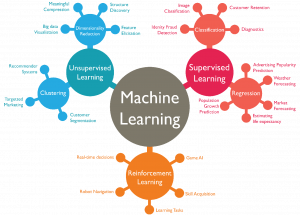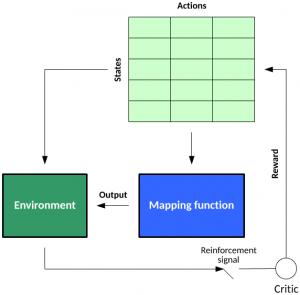The learning objectives of this definition assignment are to help students understand the importance and the role of definition in technical writing. Students should distinguish three different definitions in detail and choose the proper definition based on audiences and situations.
Situation:
The audience I am writing for is the non-technical based university students that want to understand the concept of machine learning. Therefore, I choose to give some basic introductions to machine learning and provides three definitions, overview of the history, application today and analysis of machine learning.
Parenthetical Definition:
While machine learning (Using statistical/mathematical models to make predictions on data) is not a new technique, interest in the field has exploded in recent years.
Sentence Definition:
Machine learning is a computer science technique that uses data and statistical algorithms/models to imitate how humans learn.
Expanded Definition:
Machine learning is a computer science technique that uses data and statistical algorithms/models to imitate human learning.
Machine learning is a process of reasoning previous cases. Any trustable algorithm/model generally solves problems by referring to similar prior cases, but the way of referring is different based on the choice of algorithm/model. The learning process examines many previous examples and builds the capacity for models. After the learning process, models will generalize new examples and predict future data to help solve real problems. (Jo, 2021)
The term machine learning was first used in 1959 by Arthur Samuel, an American pioneer in computer gaming and artificial intelligence. In the early years, experts in computer science used machine learning to recognize images or patterns. The first representative book in the research of machine learning is Nilsson’s book on Learning Machines. This book introduces some machine learning methods to solve pattern classification problems. In 1973, Duda and Hart extended the usage of machine learning to pattern recognition. Pattern recognition refers to recognizing different patterns using a computer and without human intervention. In 1981, a “neural network” model (a machine learning model that processes data as neurons work in a biological brain) was used and recognized 40 characters, including 26 letters, ten digits, and four special symbols in the computer. (Wikipedia, 2021) Nowadays, the use of machine learning extends to many areas, as we can see in figure 1, such as data visualization, structure discovery, market and weather forecasting, image classification, real-time decision making, robot navigation and other areas (Shewan, 2021)
Figure 1: Application in Machine Learning (source: https://www.wordstream.com/blog/ws/2017/07/28/machine-learning-applications)
There are three types of machine learning — supervised learning, unsupervised learning and reinforcement learning. Supervised learning uses labelled datasets to train algorithms, and the trained algorithms help classify data or accurately predict outcomes. In a well-trained model, parameters (constants to help make decisions or predict values) are often adjusted in many rounds. In each round, only a single piece of data is used. Market forecasting is an example of supervised learning. Unsupervised learning uses machine learning algorithms to analyze and cluster unlabeled datasets. The purpose of unsupervised learning is to find any patterns or grouping in data without human intervention. (IBM Cloud Education, 2020)
Reinforcement learning performs a “rewards/punishments” system that maps a series of inputs to outputs with dependencies. In other words, the previous output will affect the subsequent input. Inputs are usually some states in a particular environment, and the outputs are actions at a given state. As shown in figure 2, the algorithm tries to build a state-action pair table by using state-action pairs within a particular environment. The well-learned model exploits the state-action pair rewards to assign the best action for a given state. (Jones, 2017)
Figure 2: Reinforcement Learning Mechanism (source: https://developer.ibm.com/articles/cc-models-machine-learning/#reinforcement-learning.)
References:
IBM Cloud Education. (2020, July 15). What is machine learning? IBM. Retrieved September 30, 2021, from https://www.ibm.com/cloud/learn/machine-learning.
Jo, T. (2021). Chapter 1 Introduction. In Machine learning foundations: Supervised, unsupervised, and advanced learning (pp. 3–22). essay, Springer.
Jones, T. (2017, December 5). Models for machine learning. IBM Developer. Retrieved September 30, 2021, from https://developer.ibm.com/articles/cc-models-machine-learning/#reinforcement-learning.
Shewan, D. (2021, July 15). 10 companies using machine learning in cool ways. WordStream. Retrieved September 30, 2021, from https://www.wordstream.com/blog/ws/2017/07/28/machine-learning-applications.
Wikimedia Foundation. (2021, September 25). Machine learning. Wikipedia. Retrieved September 30, 2021, from https://en.wikipedia.org/wiki/Machine_learning.


Leave a Reply